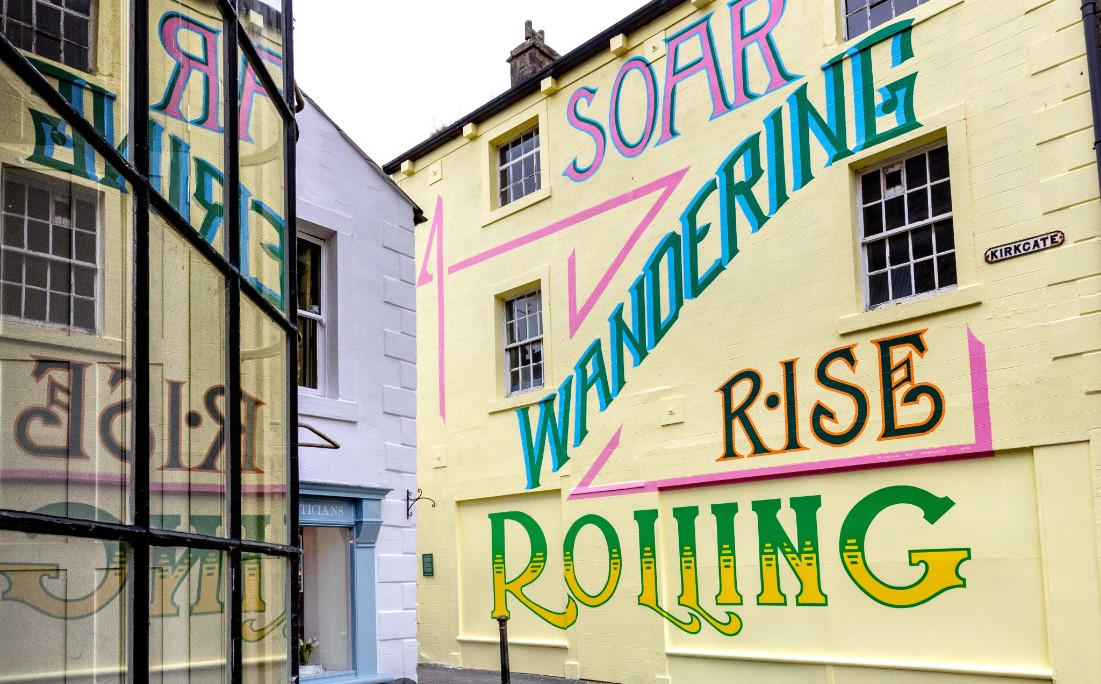
ARTIST FEATURE - UMBERTO SIGNS
Published on 06.08.2021 by Rachel

Published on 06.08.2021 by Rachel
Robert Walker specialises in traditional signwriting and reverse glass signs under the name Signs by Umberto. We had a chat about his recent mural and his QEST Scholarship to train with David A Smith MBE but first, for those unfamiliar with Robert, a perfect introduction is the below video, Becoming Umberto by James G. Wall
The following conversation came about after Robert sent me some photos of his latest mural, more photos of this project, and many other can be found on his instagram here

Your recent mural was inspired by historical type from across Yorkshire and re-drawn with inspiration from the book 'Shadow Type', what do you generally use for inspiration?
I mostly use books for inspiration, however, I do find inspiration everywhere. Type reference can be found from manhole covers through to graveyards. I try to choose the context carefully and use a
period typeface to inspire a contemporary version.
Any other book recommendations?
If you can, get your hands on the old Speedball catalogs/booklets/sign writing manuals. They are packed with ephemera and priceless amounts of type reference and additional information on technique.
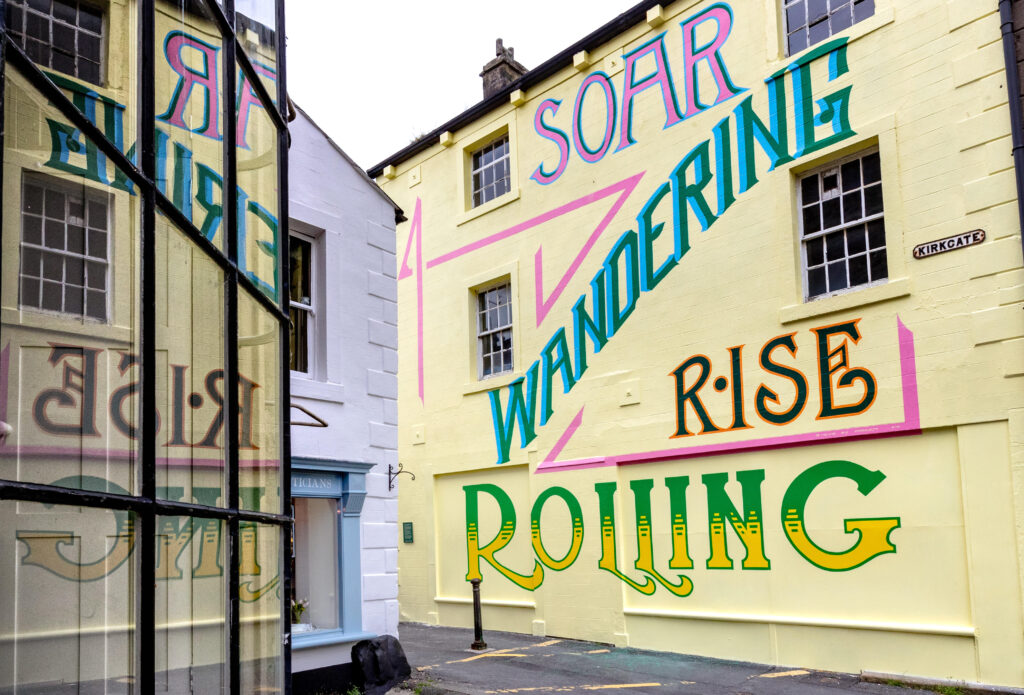
Having done a number of murals, what are the challenges of working on a larger scale?
Depending on the wall, some have multiple challenges that make painting difficult, such as not being able to work on a flat surface. A wall can have a lot of sections and each section is a different material/surface. A large wall I painted for Huddersfield B.I.D had masonry, cast iron, steel shutters, wood, and plastic in the way of the lettering. However, I thrive on these challenges and feel immense satisfaction if I've managed to allow the type to bend around these tricky areas.
I use paint that can be mixed to any colour across any surface, to allow the piece to flow and continue, despite obstacles. Another challenge is making sure the lettering is consistent, however, working to a grid really helps to keep the scale consistent. For the rough walls, I use a combination of brushes from Diall, Wooster, Purdy, and A.S.Handover. I use Handover brushes for detail and cutting in and the rest for the larger areas.
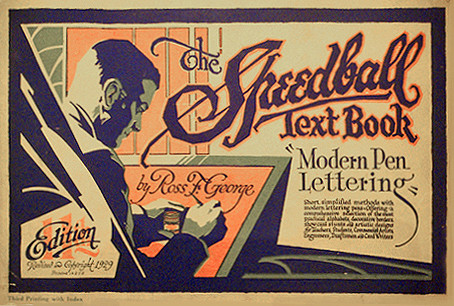
You are already creating beautiful reverse glass gilded signs, and you were recently awarded a QEST Scholarship to train with David A Smith learning the art of brilliant cutting and silver mirroring (congratulations!)
Thank you
Was this influenced at all by Heritage Crafts listing brilliant cutting as a critically endangered craft?
In some ways yes, I'm a member of the HCA and I'm aware of crafts falling into and out of the lists for endangered crafts. However, it's always been
my ambition to keep as many processes alive as I can, and hope to be able to leave a legacy for my son, one that he will be proud of and can take his family to see long after I'm gone.
How did you become aware of the QEST? What was the application process like?
I became aware of QEST via the Arts Council website and had applied for funding from both organisations. I was un-successful with The Arts Council but thankfully made it through each of the three stages of the QEST application. The application process was very straight forward and QEST kept me in the loop at each of the three stages. Had it not have been a pandemic, the interview process would have been held at number 1 Buckingham Place. Instead, the interview happened via Zoom,
which to be honest, helped to settle my nerves. I had my glass pieces around me as I responded through the interview, giving context to how I think and work. The application process requires you to give evidence regarding the direction of the work and why the work I make is important to me.
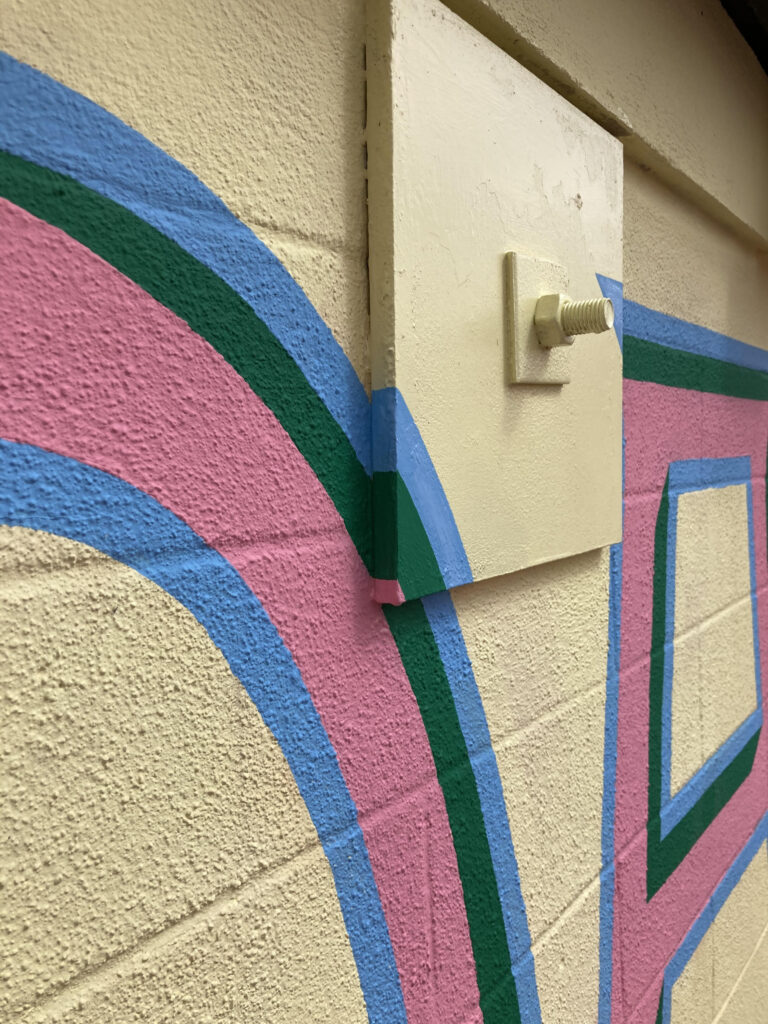
What influence do you think these new skills will have on your work?
I would like to continue to make glass signs with a greater sense of detail and authenticity to the origins of the techniques. I have several pieces in the studio that I'm currently working on, which are taking longer than expected due to juggling a varied mixed workload. So I may be painting a large mural for one project and then a shop fascia or an A-board for another project whilst then making glass signs for clients.
Having lectured in graphic design and typography, do you think that graphic design is a good starting point for people interested in the art of sign painting?
Yes, I do, for example, a good graphic design course should be teaching the principles of layout and typography, including grid systems. Grid systems can be used to break up the anatomy of type which can be applied to scaling up or down for large murals, or editorial work. Both are similar processes but with distinct differences in output, e.g. The work of Chris Ashworth on Instagram demonstrates his love for slicing up Helvetica and re-applying the type on a grid with distressed parts to the work. That is a very different outcome to painting crisp large scale lettering on a wall, however - both pieces of work require an understanding of
the anatomy of type and the rules of making and breaking the grid.
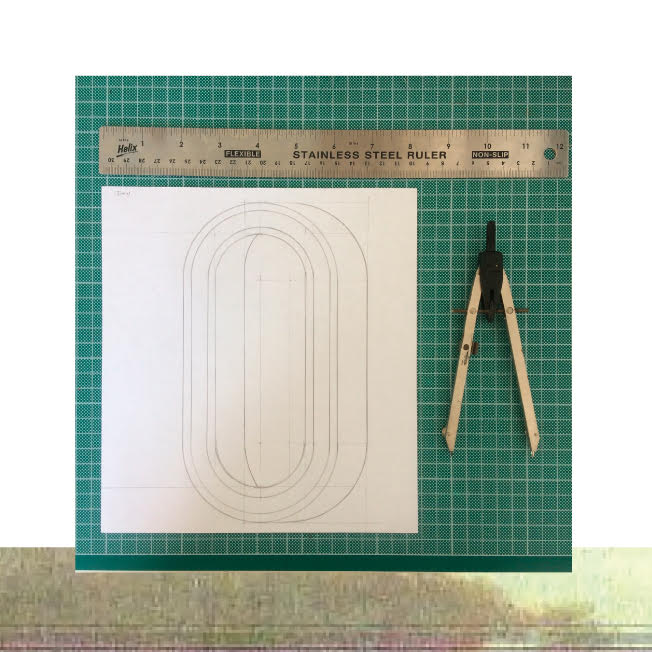
Do you have any advice for people interesting in starting out in sign painting and gilding?
Yes, submerge yourself into it. There is so much to learn and all of it is very enjoyable. Try workshops first to see the techniques up close, either from Better Letters or David A Smith MBE among others.
If money is an issue and you can't attend workshops, then soak up every film/tutorial you can from this blog. When I started out, several people inspired me to leave full-time education and pursue a career in signwriting. Those people were David A Smith MBE, Will Lynes,
Eddie Bennet, Mike Myer, James from Dapper Signs and Jacob from Copenhagen Signs as well as industry pros like House Industries. All of these people had passion and integrity, honesty in their work. I was needing that in my life and absorbed every film and tutorial I could in order to develop.
I'm still developing and I'll never stop learning. I feel deeply inspired by the folks in this industry - Tyler and Co, Hannah Sunny Whaler, Ash Bishop, Jack Holland to name a few, I could name hundreds.
Keep learning, keep falling down, be critical with your own work but only in the sense of allowing the work to grow. We ALL make mistakes and lettering doesn't come easy without a bit of graft behind it. Put the hours in and the rewards are huge.
What do you see in the future for Umberto Signs?
Not entirely sure, the business seems to be on a knife-edge at the moment, in the sense of taking on bigger commissions. I've been very lucky to work for some incredible people these past five years, people like Charles and Caroline Gladstone as well as Laura Burlington.
Agencies like Deco Publique have been so supportive and helped elevate my studio output by allowing me to paint a 30ft mural. I'm proud of my work and would like to keep growing, pushing larger murals and larger pieces of intricate reverse gilded glasswork, such as the work for the Gladstones, Deco Publique, and Jamie Holman. I worked with Jamie Holman at the start of the pandemic on one of the largest glass signs I've made to date. That sign hasn't been shown yet and will be the centerpiece at The British Textile Biennial in October.
If I can continue to leave behind me a portfolio of work that may become ghost signs in 100+years or glasswork that may hopefully end up in a museum, then my goal will be reached. All I really want to do is make the best work I can and leave a legacy for my son Reuben and my family as a whole.
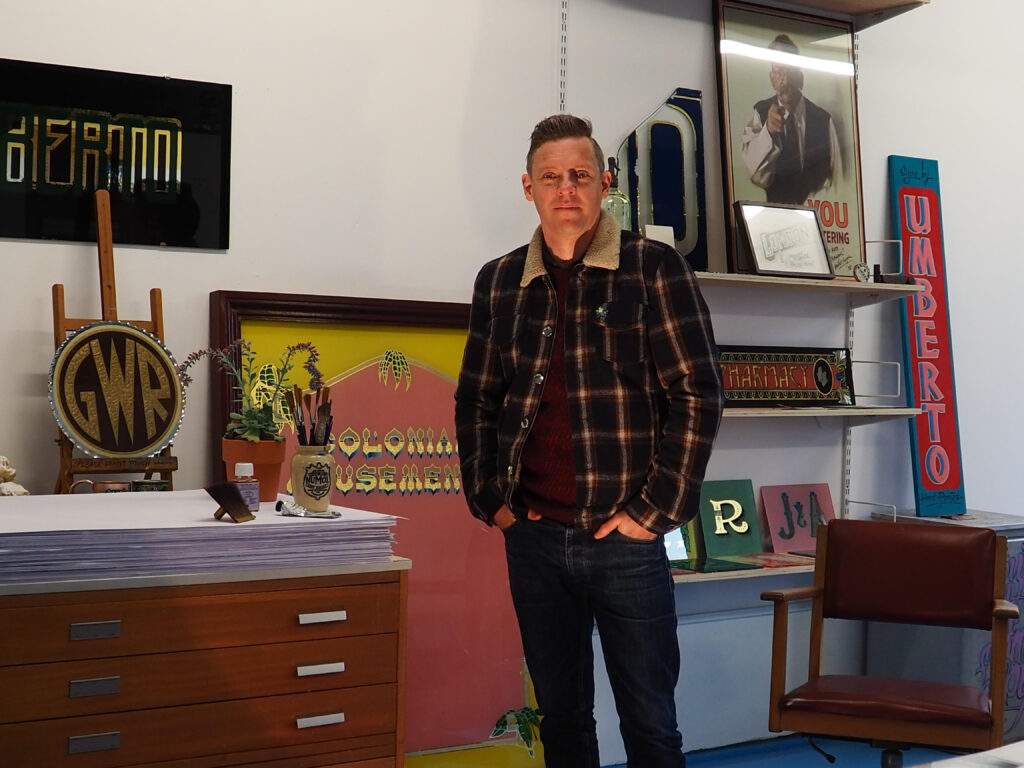
Any must have items in your kit box?
That's a tricky one, I reckon so many signwriters/painters have a whole manner of quirky things in their sign kit. I'm going to be boring and say "The Masters' Brush Cleaner and Preserver" that stuff is incredible when it comes to cleaning brushes. I often keep an array of knives and blades as well, for shaving off any awkward areas when gilding. I like good quality pencils as well, Tombow - Vietnamese pencils have stunning graphite which pull really nice lines. Jack Holland put me onto Owatrol Oil as well, amazing - similar to Chromoflo but even better.
You can see more of Robert's work on the Signs By Umberto website and instagram.
Hooray!
Product added to basket!